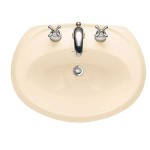Eliminate Bathroom Sink Drain Odor: A Comprehensive Guide
Bathroom sink drain odors are a common household nuisance. These unpleasant smells can permeate the bathroom, creating an unsanitary and unwelcoming environment. Understanding the causes of these odors and implementing effective solutions are crucial for maintaining a clean and fresh-smelling bathroom. This article will explore the common culprits behind bathroom sink drain odors and provide a comprehensive guide to eliminating them.
Understanding the Root Causes of Drain Odor
The primary cause of bathroom sink drain odors lies in the accumulation of organic matter within the drainpipe. This matter typically includes hair, soap scum, dead skin cells, toothpaste residue, and other debris that washes down the drain during regular use. Over time, this accumulation forms a slimy biofilm that clings to the interior walls of the drainpipe. This biofilm provides a breeding ground for bacteria, fungi, and other microorganisms that decompose the organic matter. The decomposition process releases gases, such as hydrogen sulfide, methane, and ammonia, which are responsible for the foul odors emanating from the drain.
Another contributing factor is the presence of a P-trap. The P-trap is a U-shaped pipe located under the sink that is designed to hold a small amount of water. This water acts as a barrier, preventing sewer gases from entering the bathroom through the drain. When the P-trap dries out, due to infrequent use or evaporation, the barrier is compromised, and sewer gases can escape into the bathroom. Similarly, a cracked or damaged P-trap can also allow sewer gases to leak into the bathroom.
Furthermore, improper ventilation can exacerbate drain odor problems. Plumbing systems are typically equipped with vent pipes that allow air to circulate and equalize pressure within the pipes. If these vent pipes are blocked or obstructed, it can create negative pressure within the drain, drawing air and sewer gases from the drain into the bathroom. Blocked vent pipes can also lead to slow draining and gurgling sounds from the drain.
Finally, less common but potentially significant sources of drain odor include issues with the main sewer line. If there is a blockage or leak in the main sewer line, it can cause sewer gases to back up into the plumbing system, including the bathroom sink drain. In such cases, the odor may be more pervasive and accompanied by other symptoms, such as multiple drains draining slowly or toilets not flushing properly.
Effective Methods for Eliminating Drain Odor
Addressing bathroom sink drain odor requires a multi-faceted approach that targets the underlying causes. The first step is to thoroughly clean the drain to remove the accumulated organic matter and biofilm. Several methods can be employed for this purpose.
Boiling Water: Flushing the drain with boiling water is a simple and effective way to dislodge loose debris and kill some of the odor-causing bacteria. Slowly pour a kettle or pot of boiling water down the drain, being careful to avoid splashing. Repeat this process a few times to ensure thorough cleaning. This method is particularly effective for removing soap scum and grease buildup.
Baking Soda and Vinegar: This classic DIY cleaning solution is a powerful odor neutralizer and drain cleaner. Pour about one cup of baking soda down the drain, followed by one cup of white vinegar. The mixture will fizz and bubble, helping to loosen debris and kill bacteria. Let the mixture sit for about 30 minutes, then flush the drain with hot water. This method is effective for breaking down organic matter and neutralizing odors.
Enzyme Drain Cleaners: Enzyme-based drain cleaners are a more environmentally friendly alternative to harsh chemical drain cleaners. These cleaners contain enzymes that break down organic matter into smaller, less odorous compounds. Follow the instructions on the product label, typically involving pouring the cleaner down the drain and allowing it to sit for a specified period before flushing with water. Enzyme drain cleaners are particularly effective for removing hair and grease buildup.
Mechanical Cleaning: For stubborn clogs and buildup, mechanical cleaning may be necessary. A drain snake or plumber's snake can be used to manually remove debris from the drainpipe. Insert the snake into the drain and rotate it to break up and dislodge the blockage. Pull the snake out periodically to remove the accumulated debris. This method is effective for removing hair, solid objects, and other stubborn clogs.
In addition to cleaning the drain, it is essential to address the P-trap. If the P-trap is dry, simply run the faucet for a few minutes to refill it with water. If the P-trap is cracked or damaged, it should be replaced by a qualified plumber. Replacing the P-trap will ensure that it is properly sealed and prevents sewer gases from entering the bathroom.
Checking the drain stopper is another important step. Many bathroom sinks have a stopper that can be raised or lowered to block the drain. Over time, hair and debris can accumulate around the stopper, creating a source of odor. Remove the stopper and clean it thoroughly with soap and water. Also, clean the surrounding area within the drain to remove any accumulated debris.
Finally, ensuring proper ventilation is crucial for preventing drain odor problems. Check the vent pipes on the roof to ensure that they are not blocked by leaves, debris, or snow. If the vent pipes are blocked, clear the obstruction to allow for proper airflow. If you suspect a more serious ventilation problem, consult with a qualified plumber to inspect the plumbing system.
Preventative Measures for Long-Term Odor Control
Preventing bathroom sink drain odor is often easier than eliminating it. Implementing proactive measures can significantly reduce the accumulation of organic matter and the development of odor-causing bacteria. Regular cleaning is the cornerstone of preventing drain odor. Flush the drain with boiling water or a baking soda and vinegar solution at least once a month to prevent buildup. Alternatively, using an enzyme drain cleaner monthly can also effectively prevent odor.
Installing a drain strainer can significantly reduce the amount of hair and debris that enters the drainpipe. Drain strainers are inexpensive and easy to install. They catch hair, soap scum, and other debris before they can enter the drainpipe, reducing the likelihood of clogs and odor buildup.
Avoid pouring grease, oil, or food scraps down the drain. These substances can solidify and cling to the interior walls of the drainpipe, creating a breeding ground for bacteria and contributing to odor problems. Dispose of grease, oil, and food scraps in the trash rather than down the drain.
Run the faucet for a few minutes after using the sink to flush away any remaining debris. This will help to prevent the accumulation of organic matter in the drainpipe. Pay particular attention to flushing away toothpaste residue, which can contribute to odor buildup.
Consider using a bathroom fan or opening a window to improve ventilation in the bathroom. Proper ventilation can help to reduce humidity and prevent the growth of mold and mildew, which can also contribute to odor problems. Running a dehumidifier can also help.
If you have a history of recurring drain odor problems, consider scheduling regular plumbing inspections. A qualified plumber can inspect the plumbing system for potential problems, such as blocked vent pipes, cracked drainpipes, or sewer line issues. Addressing these problems proactively can prevent more serious and costly repairs in the future.
Lastly, be mindful of the products used in the bathroom. Certain soaps, shampoos, and conditioners can leave a residue that contributes to drain buildup. Consider switching to products that are less likely to cause buildup or using a drain cleaner more frequently if you use such products.

How To Clean A Stinky Sink Drain By Home Repair Tutor
:max_bytes(150000):strip_icc()/__opt__aboutcom__coeus__resources__content_migration__mnn__images__2018__08__sink_drain-351af8e441034f319fe07f00c091d8b6.jpg?strip=all)
How To Clean A Smelly Drain Naturally

What Causes Bathroom Drains To Smell

How Can I Help A Stinky Bathroom Sink Drain Cleaning More

Prevent Drain Smells Deodorize Your Drains

Why Your Bathroom Sink Drain Smells

Smelly Bathroom Sink How To Fix Www Ultrabathroom Com

Grow Basket Deodorizer Sticks To Prevent Clogs Eliminate Odor Kitchen Bathroom Sink Crystal Drain Opener In Buy

How To Clean A Bathroom Sink Drain Smell Get Rid Of

How To Clean A Smelly Sink
Related Posts







